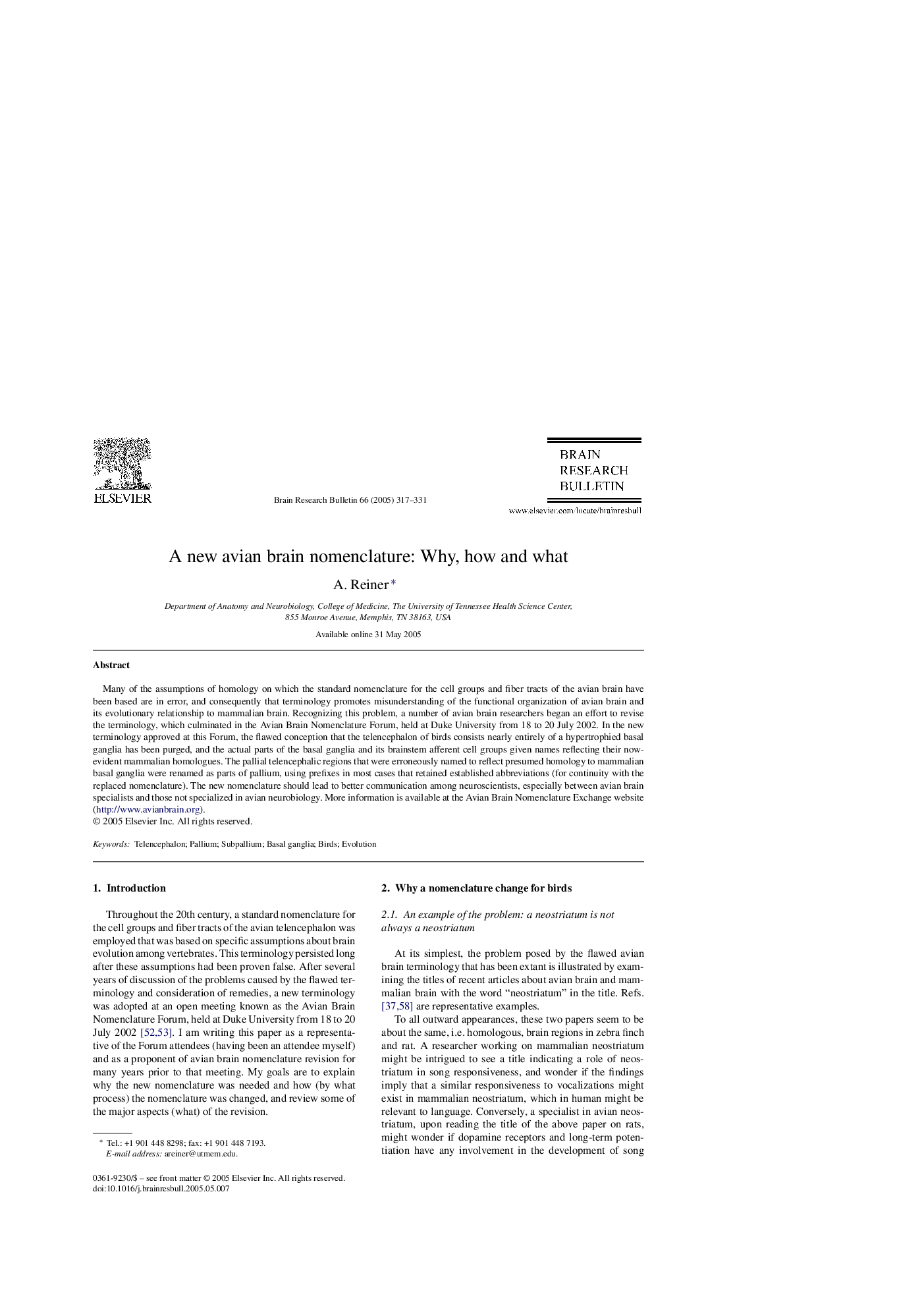| Article ID | Journal | Published Year | Pages | File Type |
|---|---|---|---|---|
| 9409420 | Brain Research Bulletin | 2005 | 15 Pages |
Abstract
Many of the assumptions of homology on which the standard nomenclature for the cell groups and fiber tracts of the avian brain have been based are in error, and consequently that terminology promotes misunderstanding of the functional organization of avian brain and its evolutionary relationship to mammalian brain. Recognizing this problem, a number of avian brain researchers began an effort to revise the terminology, which culminated in the Avian Brain Nomenclature Forum, held at Duke University from 18 to 20 July 2002. In the new terminology approved at this Forum, the flawed conception that the telencephalon of birds consists nearly entirely of a hypertrophied basal ganglia has been purged, and the actual parts of the basal ganglia and its brainstem afferent cell groups given names reflecting their now-evident mammalian homologues. The pallial telencephalic regions that were erroneously named to reflect presumed homology to mammalian basal ganglia were renamed as parts of pallium, using prefixes in most cases that retained established abbreviations (for continuity with the replaced nomenclature). The new nomenclature should lead to better communication among neuroscientists, especially between avian brain specialists and those not specialized in avian neurobiology. More information is available at the Avian Brain Nomenclature Exchange website (http://www.avianbrain.org).
Related Topics
Life Sciences
Neuroscience
Cellular and Molecular Neuroscience
Authors
A. Reiner,
